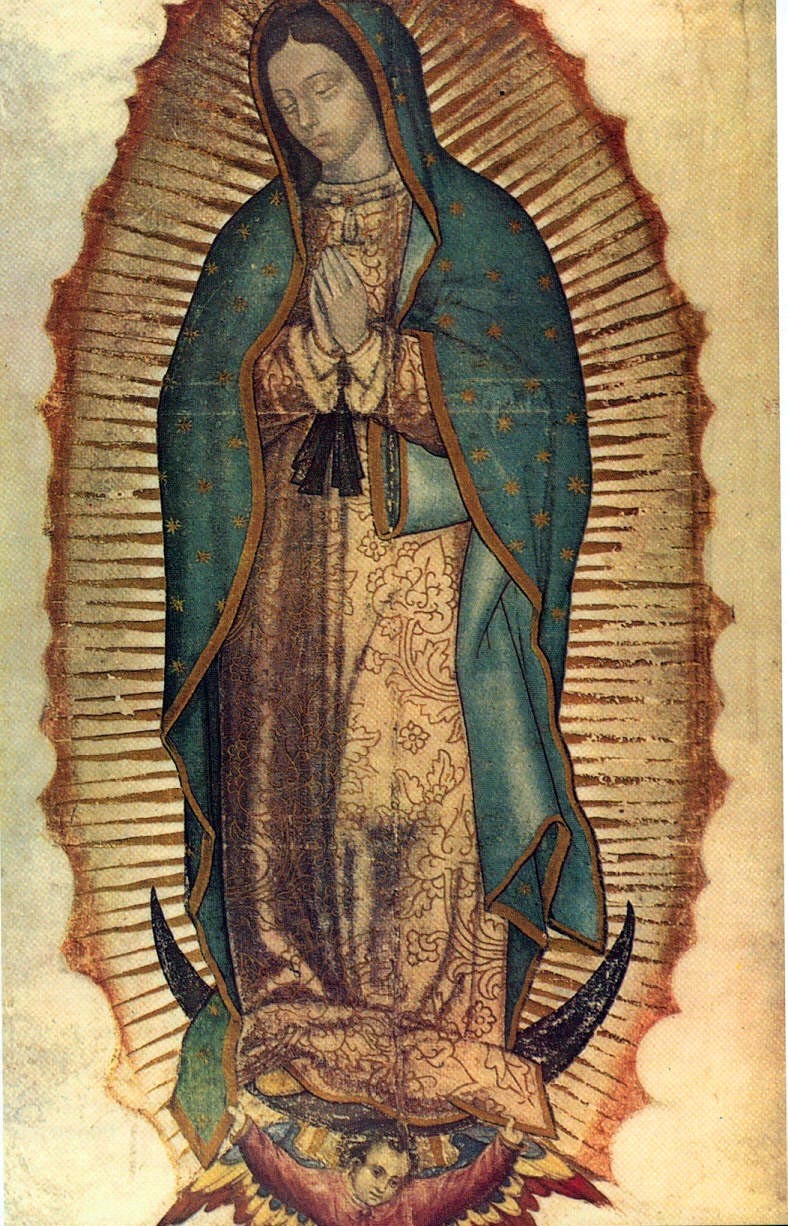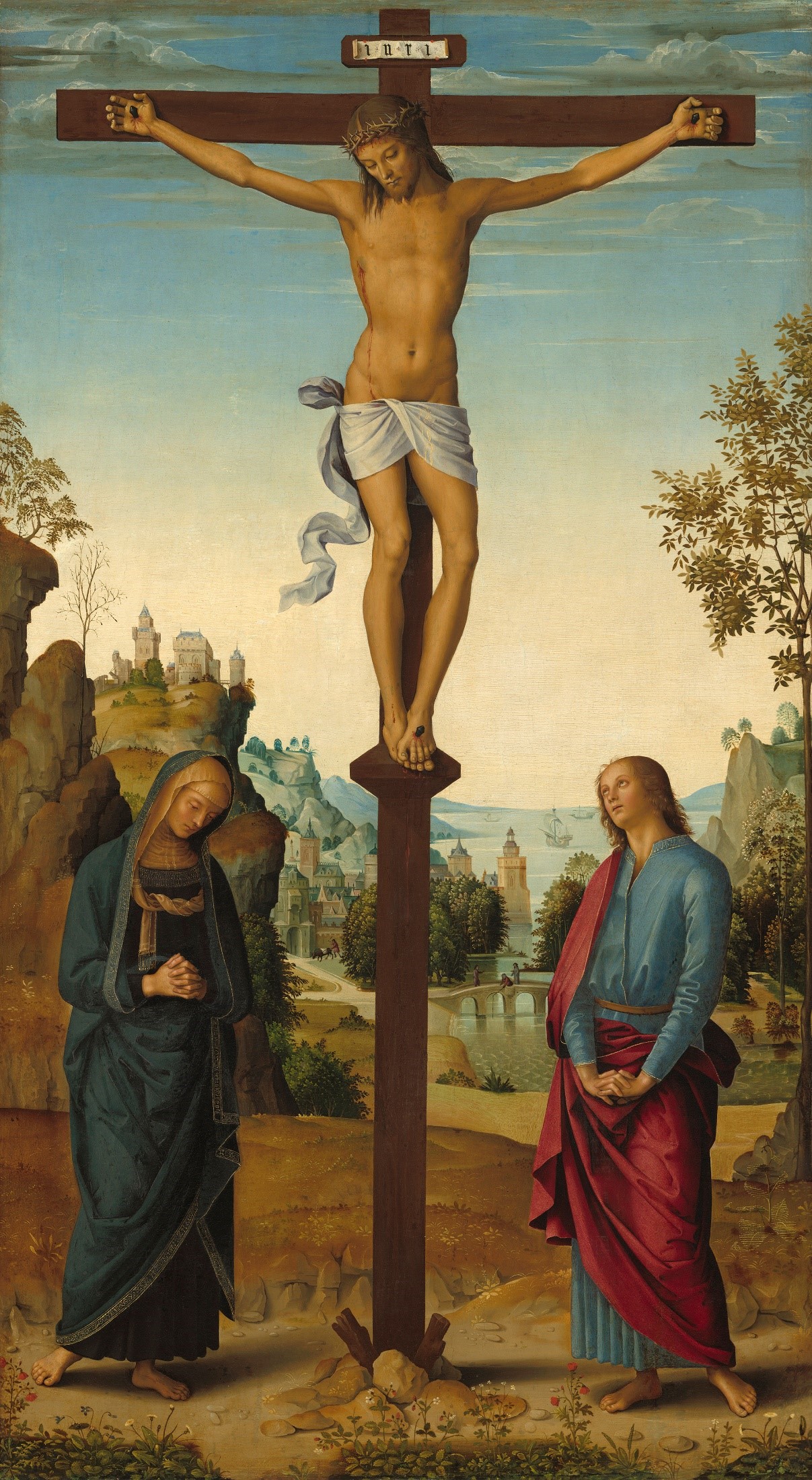
La imagen que nos queda del encuentro de Juan Diego con la Virgen de Guadalupe se asemeja bastante a una visión descrita por San Juan en el libro del Apocalipsis, capítulo 12. Ahí leemos: “Apareció en el cielo un signo grandioso: una mujer vestida del sol, la luna bajo sus pies y, sobre su cabeza, una corona de doce estrellas (Ap 12:1).
Juan Diego’s encounter with the Virgin of Guadalupe leaves us with the legacy of an image very similar to a vision found in the Book of Revelation, chapter twelve. It reads like this: “A great sign appeared in the sky, a woman clothed with the sun, with the moon under her feet, and on her head a crown of twelve stars” (Ap 12:1).

Otra imagen de María que conocemos muy bien es la madre dolorosa al pie de la cruz. La escena representada por tantos artistas nos viene del Evangelio de Juan, capítulo 19. San Juan nos dice que María y el discípulo que Jesús amaba se acercaron al pie de la cruz. Jesús crucificado y próximo a morir encomienda su madre a su discípulo y su discípulo a su madre. Le dice a María: “Mujer, ahí tienes a tu hijo” y le dice a su discípulo: “Ahí tienes a tu madre”.
Another well-known image of Mary is that of the sorrowful mother at the foot of the cross. Many artists have painted for us the scene, illustrating the Gospel of John, chapter 19. The evangelist narrates that both Jesus’ mother and his beloved disciple stood at the foot of the cross. Lifted up on the cross, Jesus entrusts his mother to his disciple and the latter to the former. Jesus says to Mary: “Woman, behold, your son” and to the disciple: “Behold, your mother.”
En la escena del evangelio que acabamos de comentar, Jesús se dirige a su madre llamándola “mujer”. Le dice: “Mujer, ahí tienes a tu hijo”. La única otra vez que vemos a María en el evangelio de San Juan es en el capítulo dos, las bodas de Caná, y en ese episodio Jesús también se dirige a María llamándola “mujer”. Cuando María le hace saber a Jesús que ya no queda vino para la boda, Jesús le responde: “Mujer, ¿qué tiene que ver esto con nosotros? Todavía no ha llegado mi hora.”
In the Fourth Gospel’s episode of the crucifixion, Jesus addresses his mother by calling her ‘woman.’ He says: “Woman, behold, your son.” The one other time Mary is seen in the Gospel of John is in chapter two, attending the wedding at Cana. In this earlier episode, Jesus also calls his mother ‘woman.’ When Mary informs Jesus that wine ran short, Jesus replies: “Woman, what is that concern to you and to me? My hour has not yet come.”
Temas para reflexionar e intercambiar:
Topics for reflection and discussion: